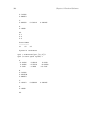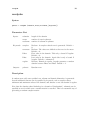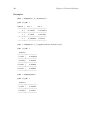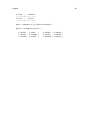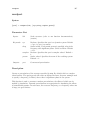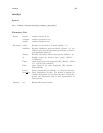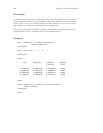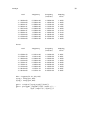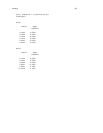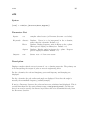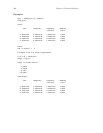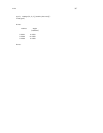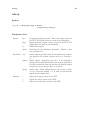330 Chapter 6. Function Reference
Description
A random system, with user specified state, input and output dimension, is generated.
Several additional features can be specified by keywords: whether or not the system is
stable, where or not it can contain oscillatory modes, whether or not it has a D term,
and bounds on the minimum and maximum pole frequencies.
If the discrete keyword is specified, a bilinear transformation is performed to get the
random discrete system. A sample time can be specified with dt.
Examples
sys1 = randsys(4,1,2,{stable,!oscillatory,...
Fmin=0.1,Fmax=10})
size(sys1)?
ans (a row vector) = 1 2 4
rifd(sys1)?
Poles:
real imaginary frequency damping
(rad/sec) ratio
-2.7920e+00 0.0000e+00 2.7920e+00 1.0000
-5.2688e+00 0.0000e+00 5.2688e+00 1.0000
-5.6953e+00 0.0000e+00 5.6953e+00 1.0000
-5.3738e+01 0.0000e+00 5.3738e+01 1.0000
Zeros:
sys2= randsys(10,1,1,{stable,oscillatory,Fmin=0.1,...
Fmax=1,!Dterm})
rifd(sys2)?
Poles:



